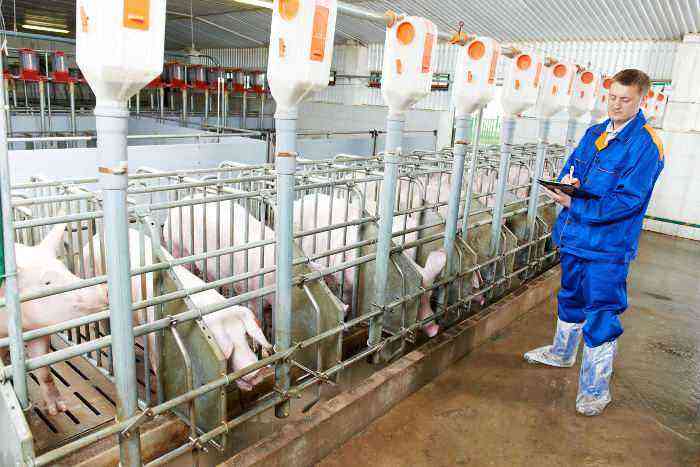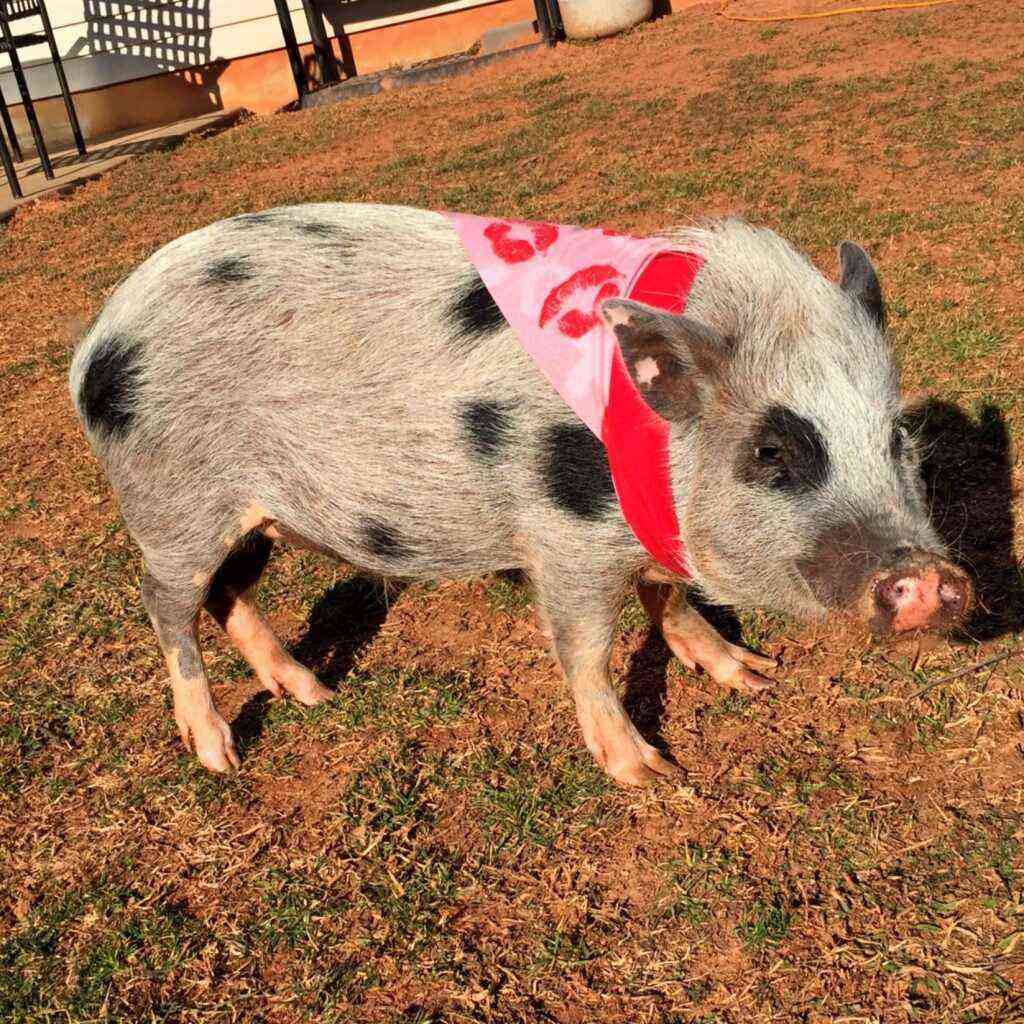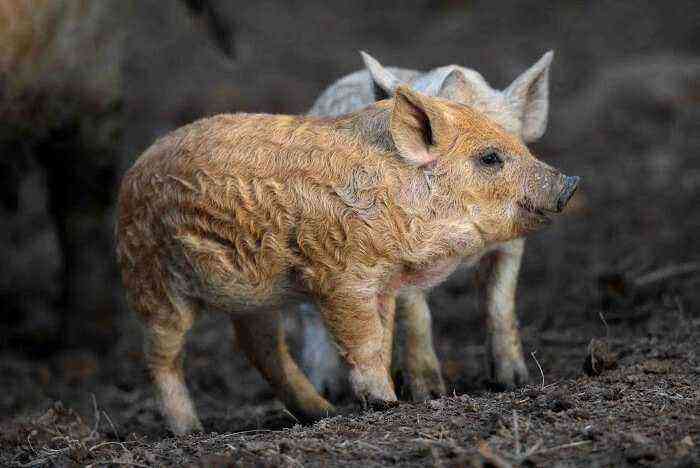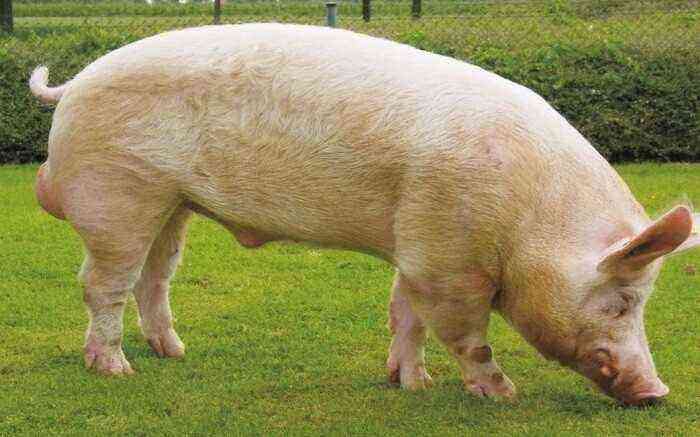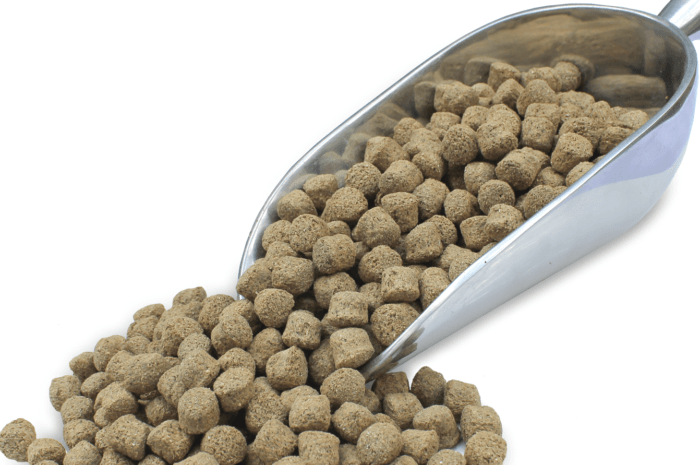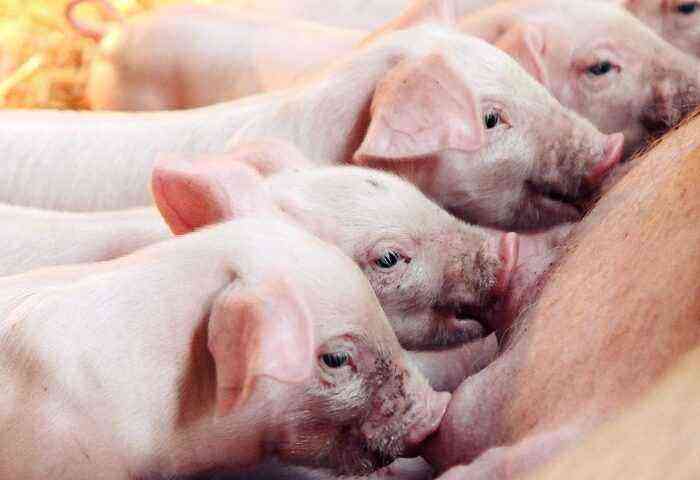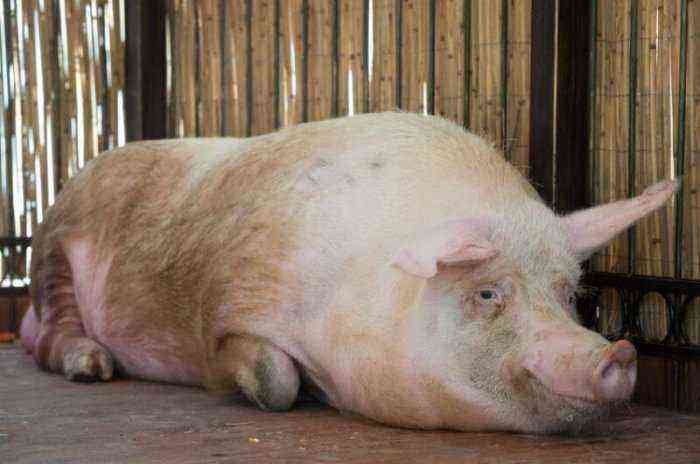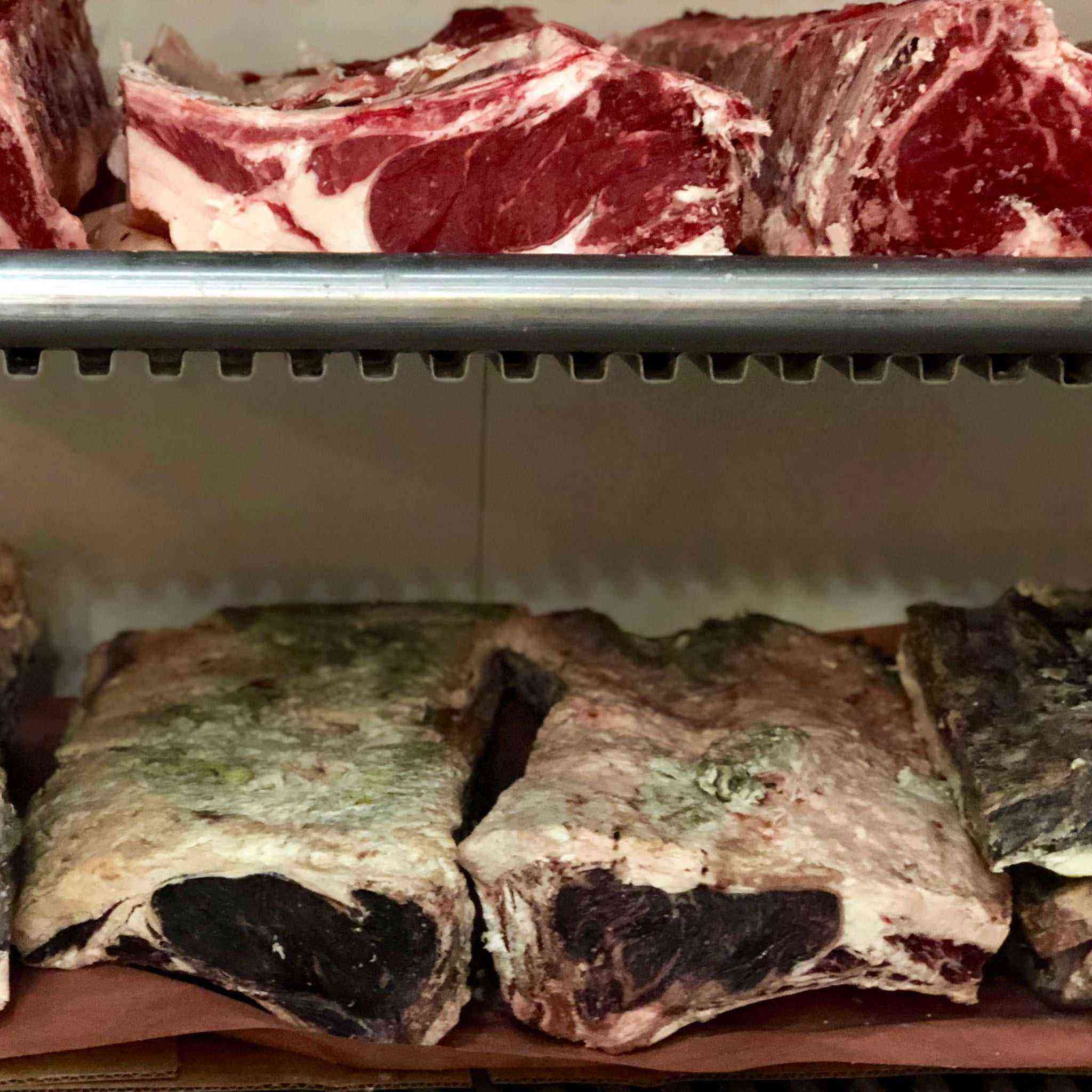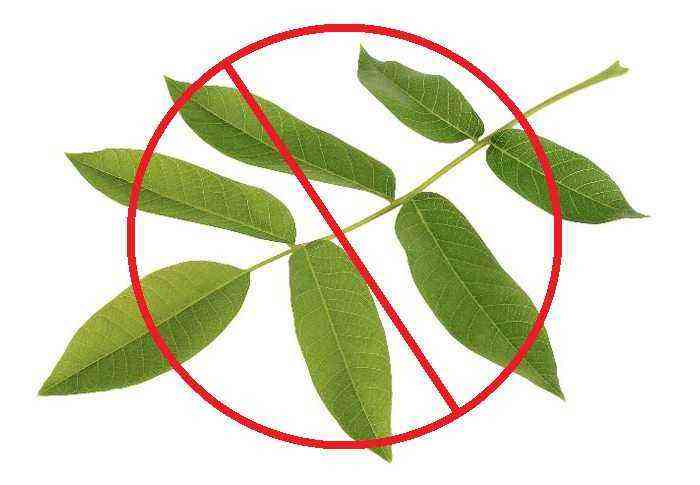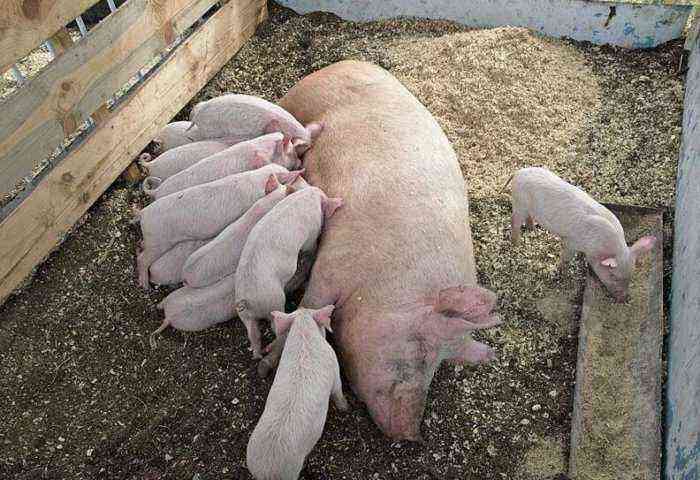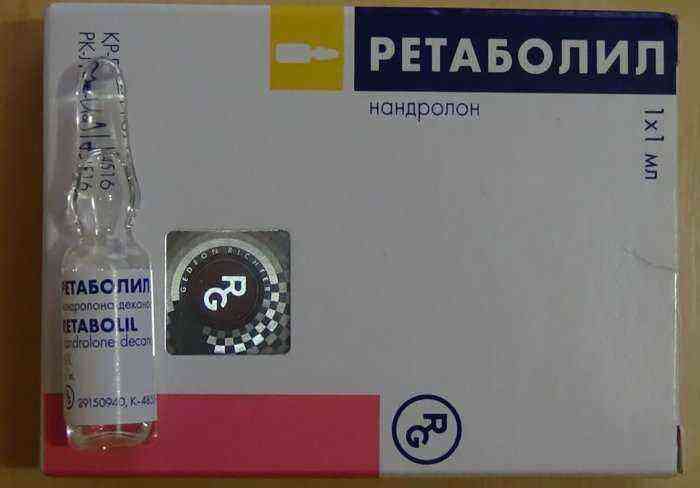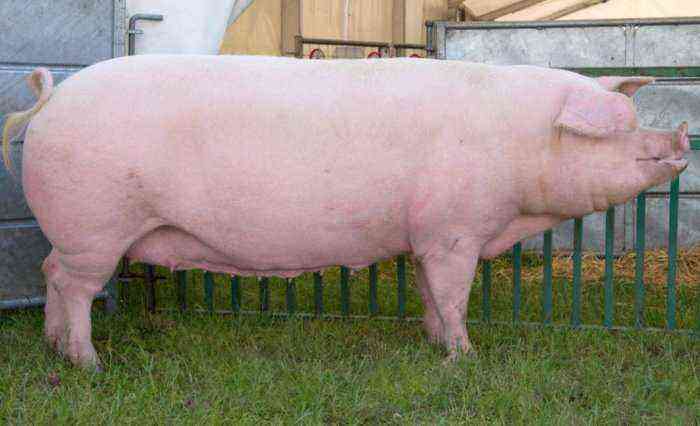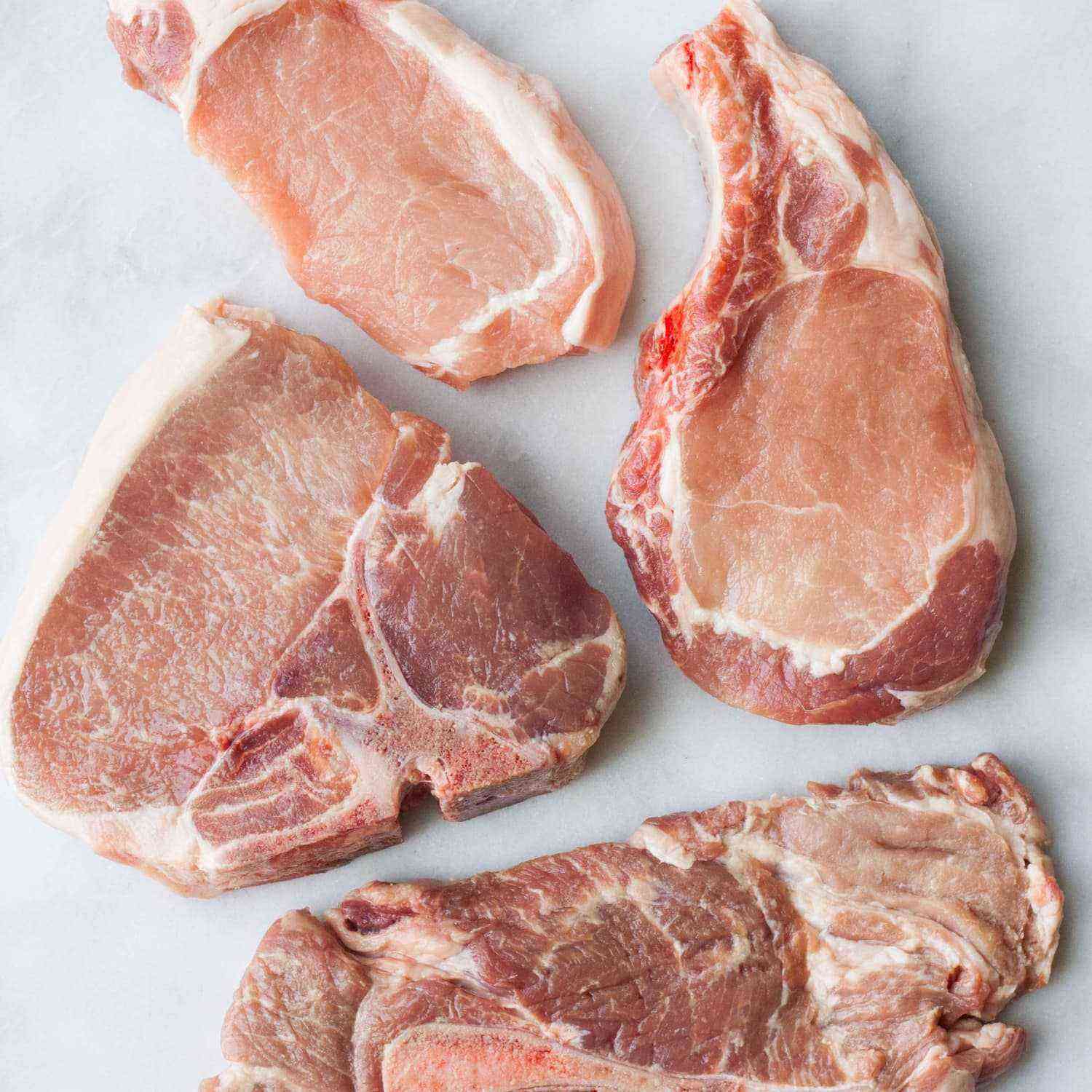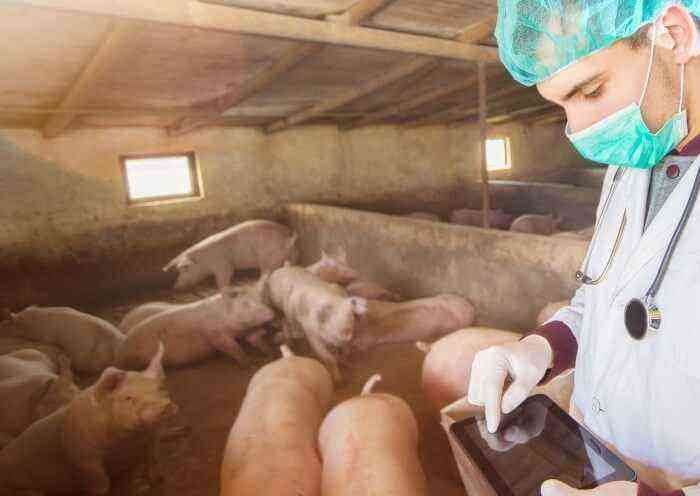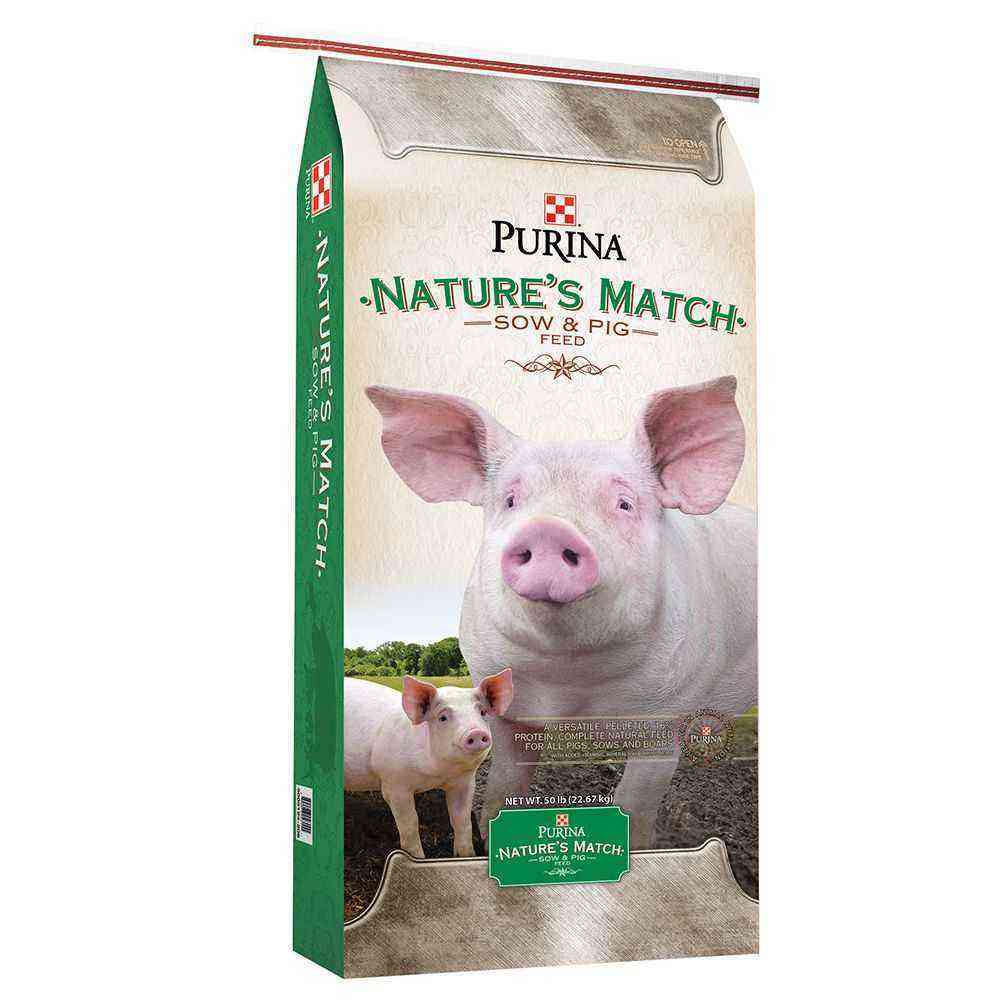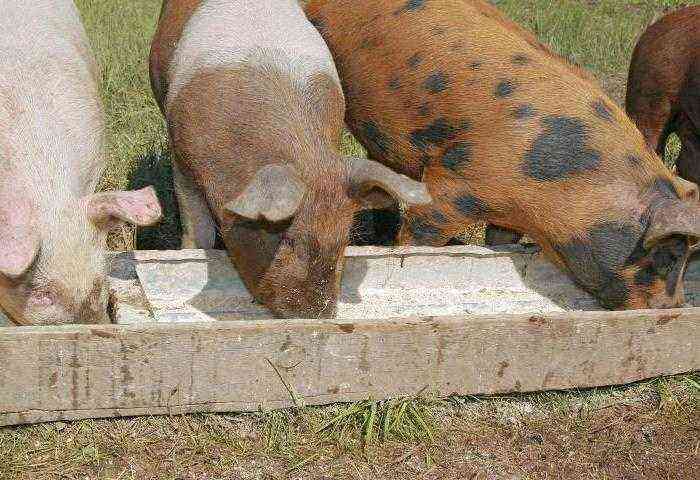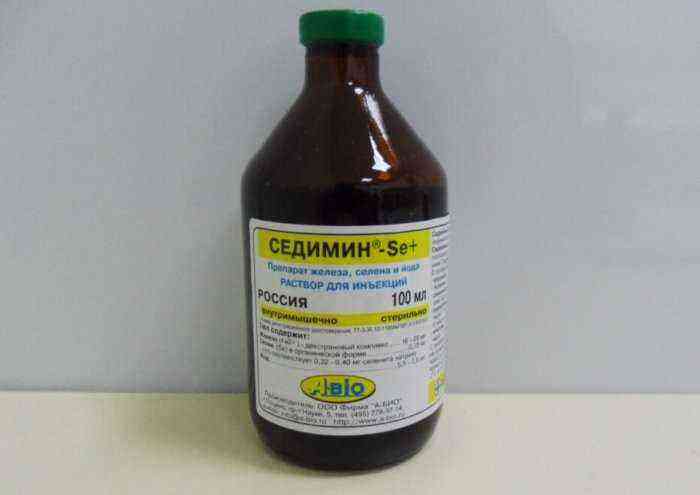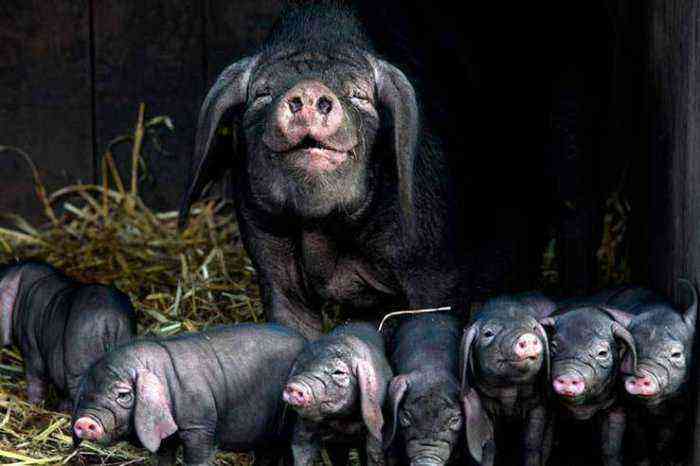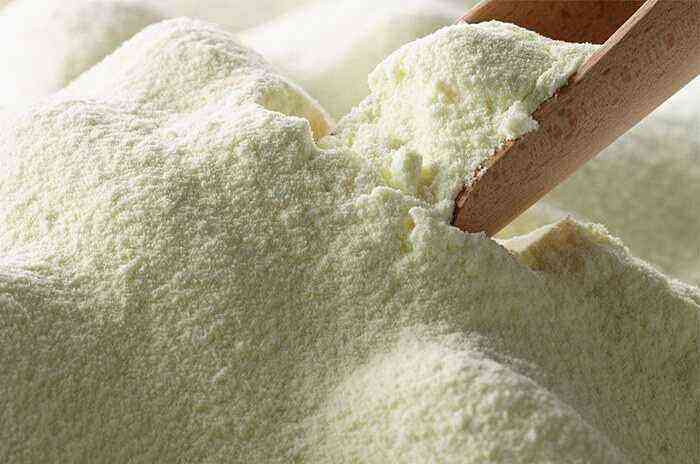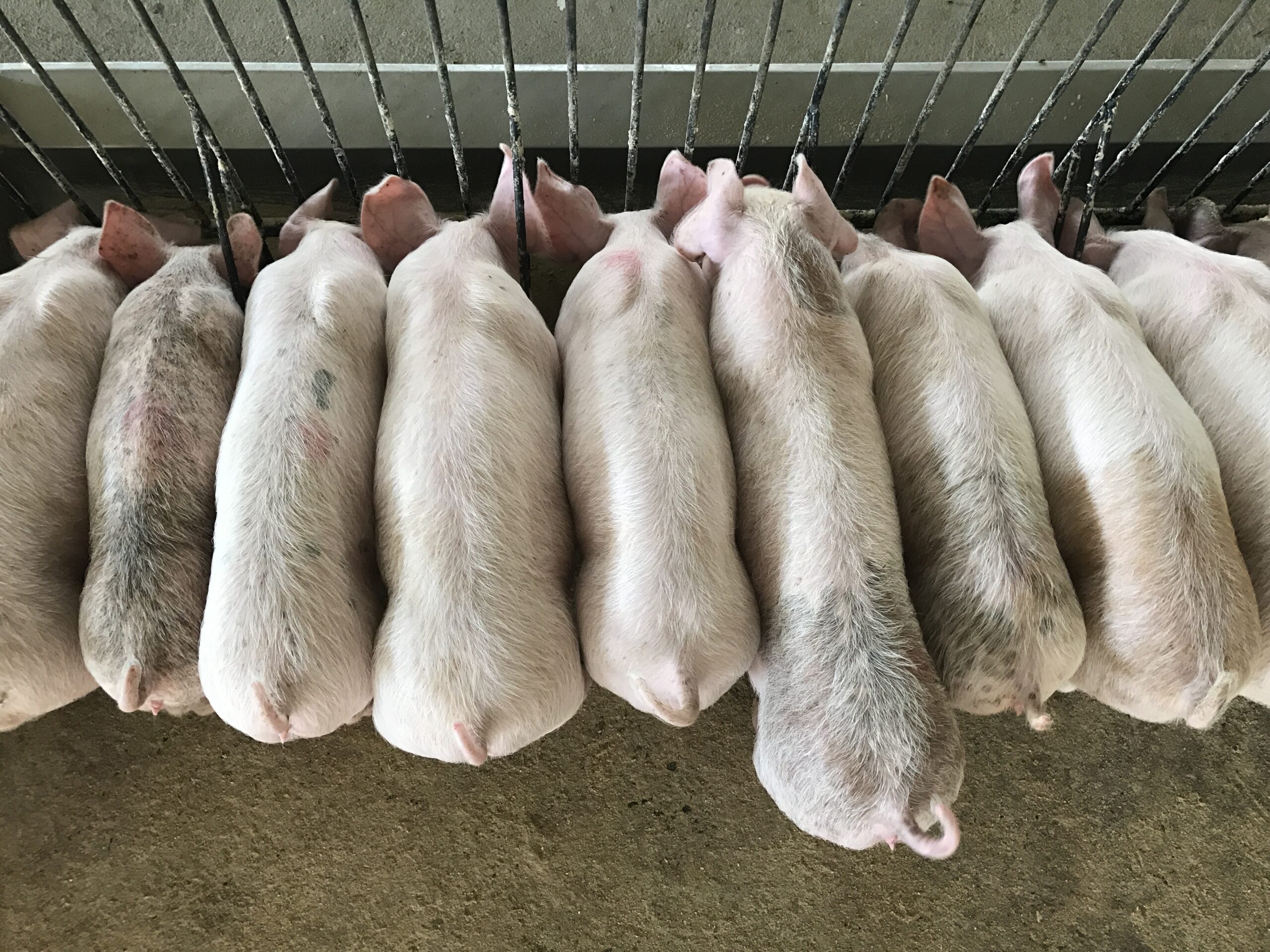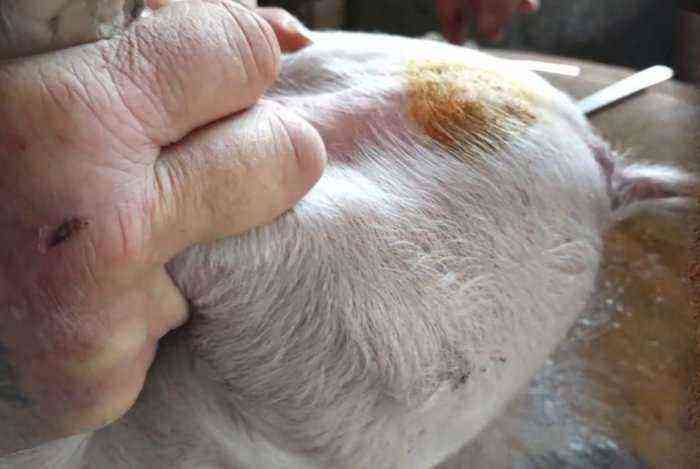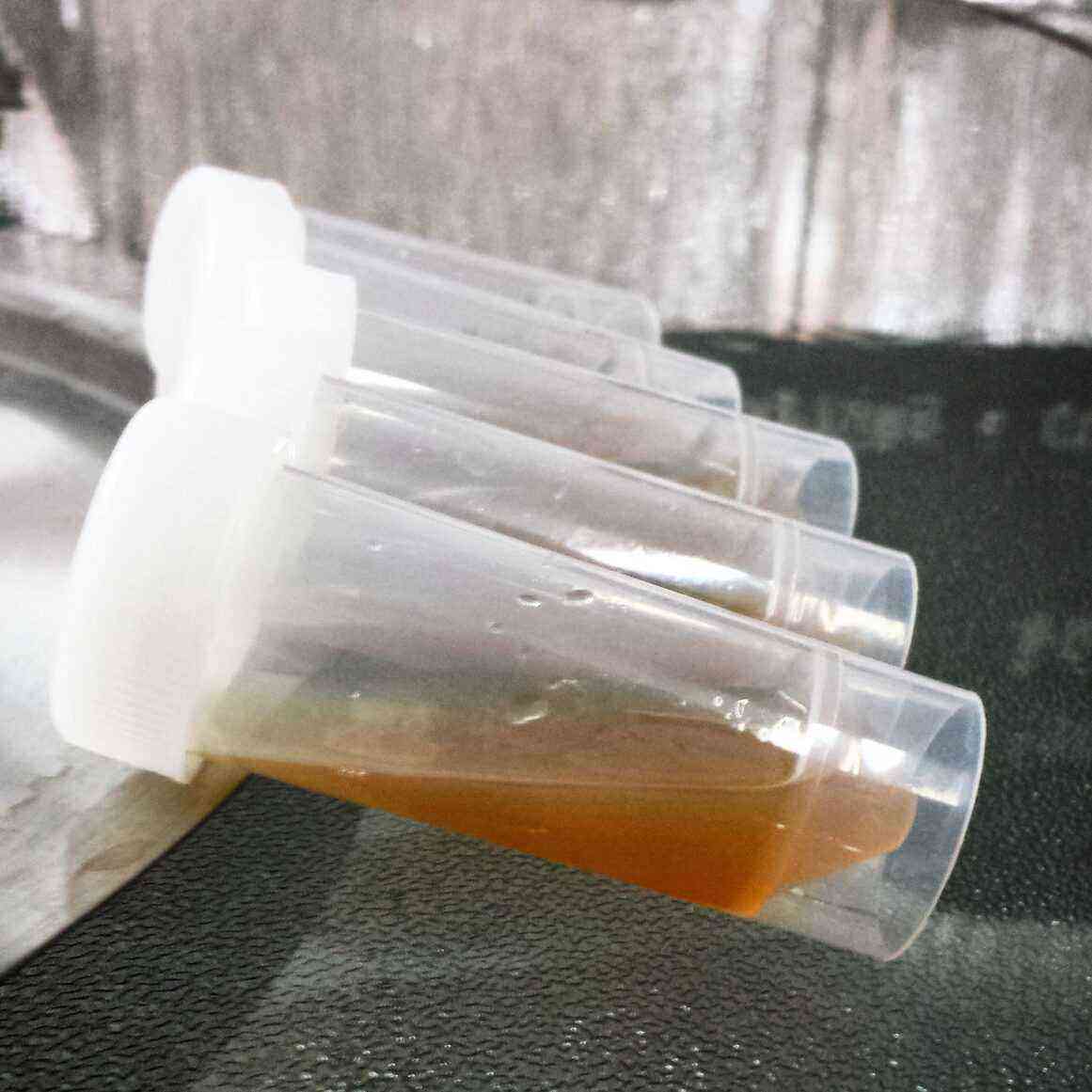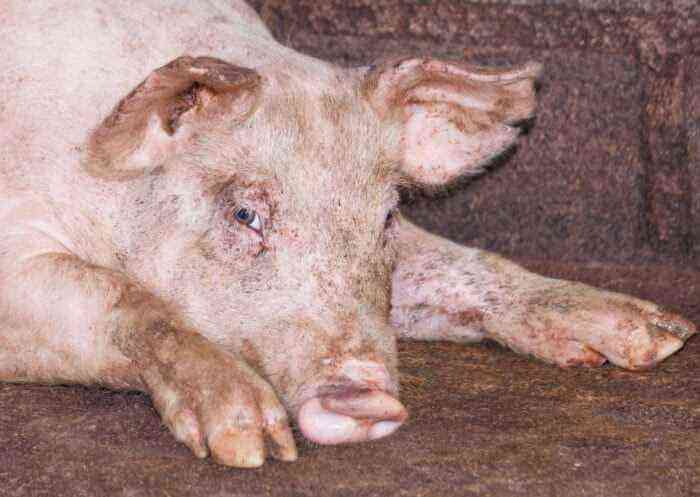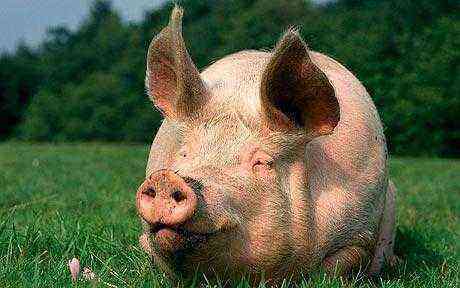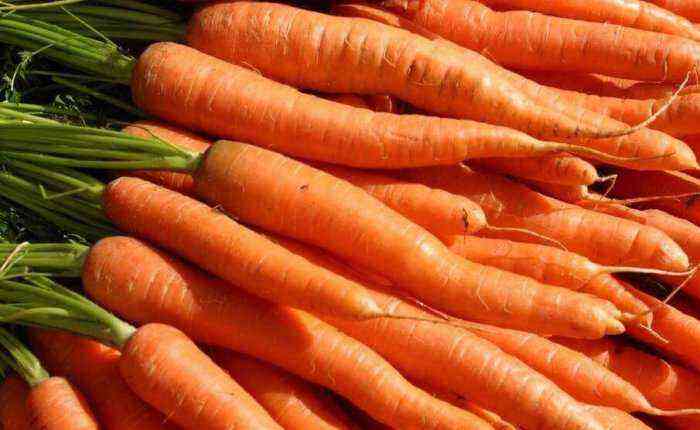When raising pigs on farms and at home, there comes a time when the piglets are weaned from the sow. Sometimes this phenomenon occurs due to the death of a pig after farrowing, or it is not able to give enough milk to feed the offspring. In any case, the breeder must ensure that the weaned piglets are properly fed and handled properly to help reduce the stress experienced by the weaned piglets.
month old pig
Features of growing newborn piglets without a sow
Often, piglets are taken away from the sow intentionally in order to be transferred to the selected fattening as soon as possible. As a rule, this procedure is carried out at the age of 4 weeks. Of course, with the forced weaning of young animals, the age may be less.
The most responsible task in this case is to ensure optimal conditions for keeping the offspring. In this regard, the following points stand out:
- maintenance of weaners for 15 days in the same pen in which they lived with their mother;
- ensuring the temperature in the room is not lower than 18 degrees at any time of the day;
- organization of high-quality dry litter, which does not contain large and coarse elements. At the same time, it is desirable to install a wooden flooring under it;
- compliance with regular walking on the street. In the warm season, such walks for young animals should last at least 3 hours a day and include as much activity as possible;
- regular cleaning of feeders from feed residues. Every week it is additionally disinfected by pouring boiling water over it;
- the constant presence of warm clean water in the drinker;
- sealing all cracks and holes through which drafts can penetrate inside.
These points are extremely important when growing young animals. The immune system of weaned piglets is not yet fully developed. Therefore, minimal cold air flows, temperature fluctuations and improper maintenance can cause pneumonia, indigestion, and inflammatory processes in the intestines in the animal.
Special attention should also be paid to how to feed piglets without a sow. In young animals that have just been weaned from their mother, the digestive system is different from that of an adult. The main difference is that the gastric juice in babies up to 2-3 months of age is secreted in minimal quantities and only after eating.
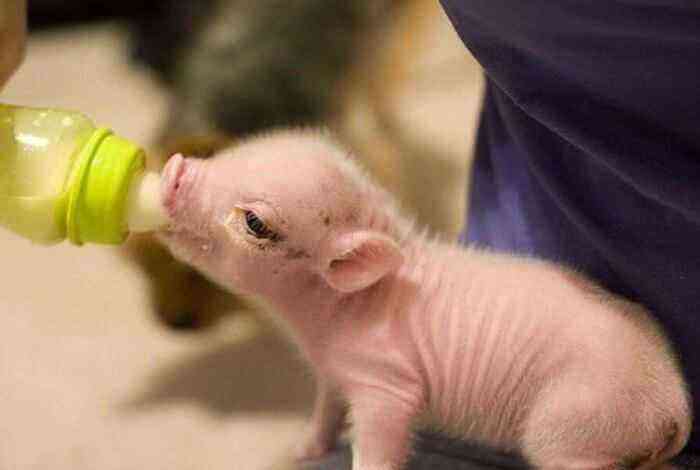
Feeding a newborn pig
In adult pigs, hydrochloric acid, which is part of the gastric juice, in addition to digesting food, is also responsible for the elimination of pathogenic microflora that enters with it. She is in the stomach all the time. Young animals, due to its absence, are extremely susceptible to various intestinal diseases. Therefore, the feeding of animals should be built in such a way as to constantly provoke the release of enzymes and hydrochloric acid, as well as in parallel to provide the necessary norms of nutrients.
Feeding rates
Newborn piglets need to be fed at least 6-7 times a day. By the age of 2 months or more, you can reduce the number of meals to 4-5. Such frequent feeding will help the body produce enzymes and gastric juice more abundantly. In addition, it will also ensure high-quality absorption of food.
Up to 3 days of a piglet’s life in case of forced weaning, it is advisable to feed it with sow colostrum. To do this, you can use the milk that is produced by other pigs who have given birth to farms. Colostrum is collected immediately after the mother feeds her own offspring. Feeding is carried out through a bottle with a nipple or through special devices.
By the 6th day of the life of the young, mixtures of concentrates are gradually introduced into the diet, and colostrum can be replaced with cow’s milk. Concentrates should be given in minimal amounts and constantly change the composition of the mixture.
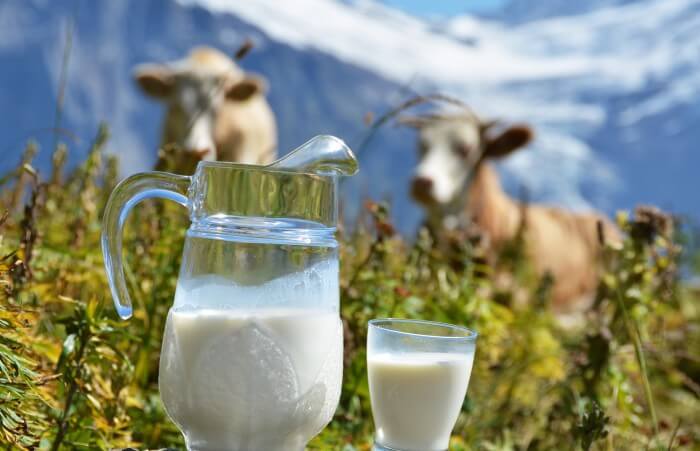
Cow’s milk
If weaning was carried out at the age of 4-5 weeks from the birth of piglets, then here the main emphasis is on compliance with the basic norms of feeding young animals. Per day he should receive:
- 1,3-1,5 kg of feed units;
- from 136 g of easily digestible protein;
- about 10 g of calcium;
- 7 g of phosphorus;
- 15 g table salt.
Reference. With proper planning of the diet, based on the listed norms, a piglet from the age of 2 months will provide a daily gain of 400-700 g. With an increase in the weight of the animal, the norms also gradually increase.
Feeding from 2 weeks to 2 months
During this period, animals should be fed at least 6-8 times a day with strict observance of the established time of meals. The period from the 14th day of life to the age of two months is especially important for the piglet. At this time, many processes and systems in the body are finally formed, there is an intensive weight gain. During this period of feeding, the weight of a piglet can increase by 5-8 times.
That is why the right diet is given special attention. Accustoming to new feeds and additives is carried out gradually. Moreover, the transition should begin before a week of age. It’s best to do it like this:
- From the 5th day of life, in addition to the colostrum of the sow, the piglet is given cow’s milk or yogurt in the amount of 1-1,5 liters per head per day. Supplement the diet with a small amount of roasted grains.
- At 7 days of age, you can also include concentrate-based jelly or liquid porridge.
- At 10 days, finely chopped hay and carrots can be eaten.
- By a two-week period, you can gradually accustom the young to green grass.
Grass is first given in the form of green bait for a couple of days. When the animal’s digestive system gets a little used to such food, they begin to drive it out to pasture three times a day for 20 minutes. By the age of 2 months, the duration of grazing increases to 1 hour or more three times a day.
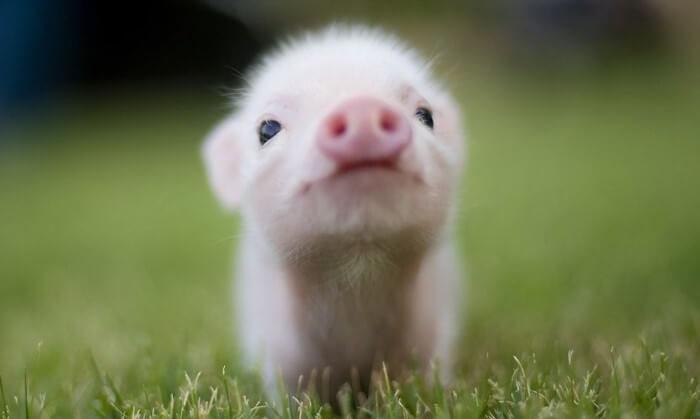
grazing baby
To diversify the diet, especially in winter, it is imperative to introduce root crops into it. To do this, from the 20th day, the young animals gradually begin to feed the chopped beets. From day 25, boiled potatoes are allowed to be eaten, which are also crushed.
Already by the first month of life of a weaned piglet, his daily diet should look like this:
- 1 kg skimmed milk (milk);
- root crops (beets and carrots) – from 0,5 to 1,5 kg;
- boiled potatoes – 1 kg;
- concentrated feed (mixtures of various grains) – at least 0,7 kg;
- grass flour – 0,1 kg;
- silage – about 0,5 kg.
If weaning is carried out in the summer, then at least 2 kg of grass from pastures is also added to the main diet. A prerequisite is free access to clean boiled water.
Throughout the second month of feeding, the diet changes slightly:
- root crops (beets and carrots) – 1,5-2 kg;
- boiled chopped potatoes – 1,5 kg;
- concentrates – not less than 1 kg;
- grass flour – 0,3 kg;
- silage – at least 1-1,5 kg;
Just like in the first menu, in the summer, about 2-3 kg of high-quality fresh grass is added to the main food composition. Dairy products at this stage can be excluded from the diet. To fill the basic need for minerals, food is supplemented with chalk and table salt.
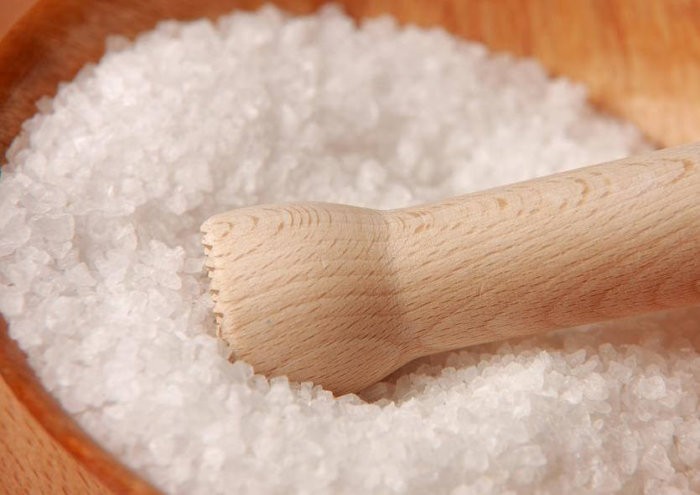
Salt
During this feeding period, it is important to prevent overeating of the baby. Otherwise, the food will not be digested, which can cause stomach problems. After each meal, the feeders are washed. If portable utensils are used for feeding, it would be useful to take them out into the sun or frost for natural disinfection.
Important! If all these points are observed, by the age of 2 months the weight of the baby reaches 20-25 kg.
Vitamin Supplements
It is worth noting that along with mother’s milk, a large amount of vitamins enter the piglet’s body, which are necessary for the full growth and development of the animal. But in the case of weaning young animals from a sow, it is not always possible to fill the need of a growing organism with the usual diet. In this case, various vitamin supplements are used.
The most popular in this regard are protein-mineral-vitamin supplements. Many domestic and import companies are engaged in the production of this type of supplement to the main diet. Therefore, BMVD exist in various versions, balanced for adult animals or piglets. This type of supplement includes high concentrations of vitamins A, B, C and D, as well as minerals and protein, necessary for rapid growth and health of the piglet.
Also, various natural acids are often used as a source of vitamins. In addition to this, they normalize digestion and improve the general condition of the baby’s body. The main acids are:
- amber;
- lemon;
- ascorbic.
They are mixed into water at the rate of 20 mg per 1 kg of piglet weight. The greatest efficiency can be achieved by alternating several different acids.
Separately, it is worth noting the vitamins Suiferrovit or Eleovit for piglets. They are supplied in the form of injections. The injection is carried out by adult animals or young animals in accordance with the instructions.
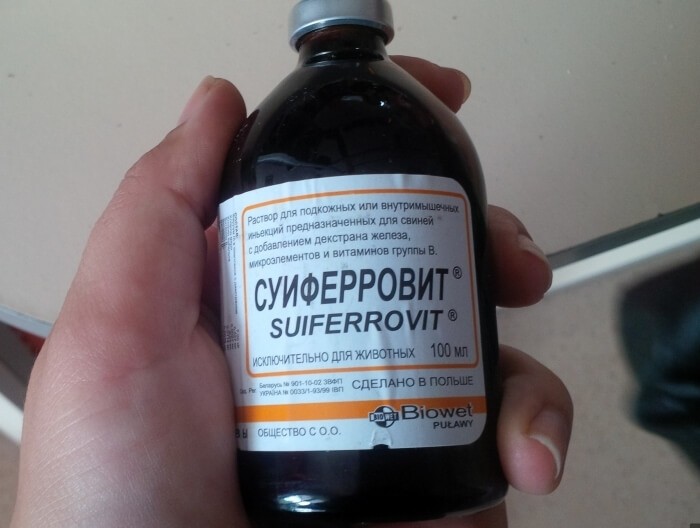
Suiferrovit
B12 is also an important vitamin for the growth and development of weaners. It is especially difficult to replenish it with ordinary food. Therefore, to ensure the required concentration of the vitamin in organs and systems, the Azobacterin supplement is used. It is added to food, starting from the age of two months. The course of admission is about 4 months. Dosage – 0,5 g per kilogram of animal weight. Given once a day.
Artificial feeding of weaners
In those situations where the mother of newborn piglets has died or cannot provide the proper amount of milk, artificial feeding is of particular importance. For its implementation, various recipes for sow colostrum substitutes are used. The simplest option in this regard is the following composition:
- cow’s milk – 1 l;
- chicken eggs – 4 pieces;
- table salt – 10 g;
- granulated sugar – no more than 1 tablespoon;
- fish oil at a dosage of 15 g.
If necessary, you can increase the amount of product. The concentration of each ingredient is increased proportionally.
Before preparing the composition, the milk is heated to a temperature of 39 degrees. Then add all the ingredients to it and mix thoroughly. After that, the temperature is again raised to the specified one and fed to the baby. The dosage for such feeding is 50 g of the mixture every 1,5 hours. Feeding is carried out throughout the day. The amount of mixture consumed by the animal must be increased gradually to avoid overfeeding.
Conclusion
The growing body of a piglet is much more demanding in terms of nutrition and maintenance than the body of an adult animal. Therefore, if young animals are weaned from a lactating sow, the ration for feeding them should be carefully planned. The result of a violation of the basic rules of feeding weaned piglets can be various diseases, stunting and even death of the entire offspring.


